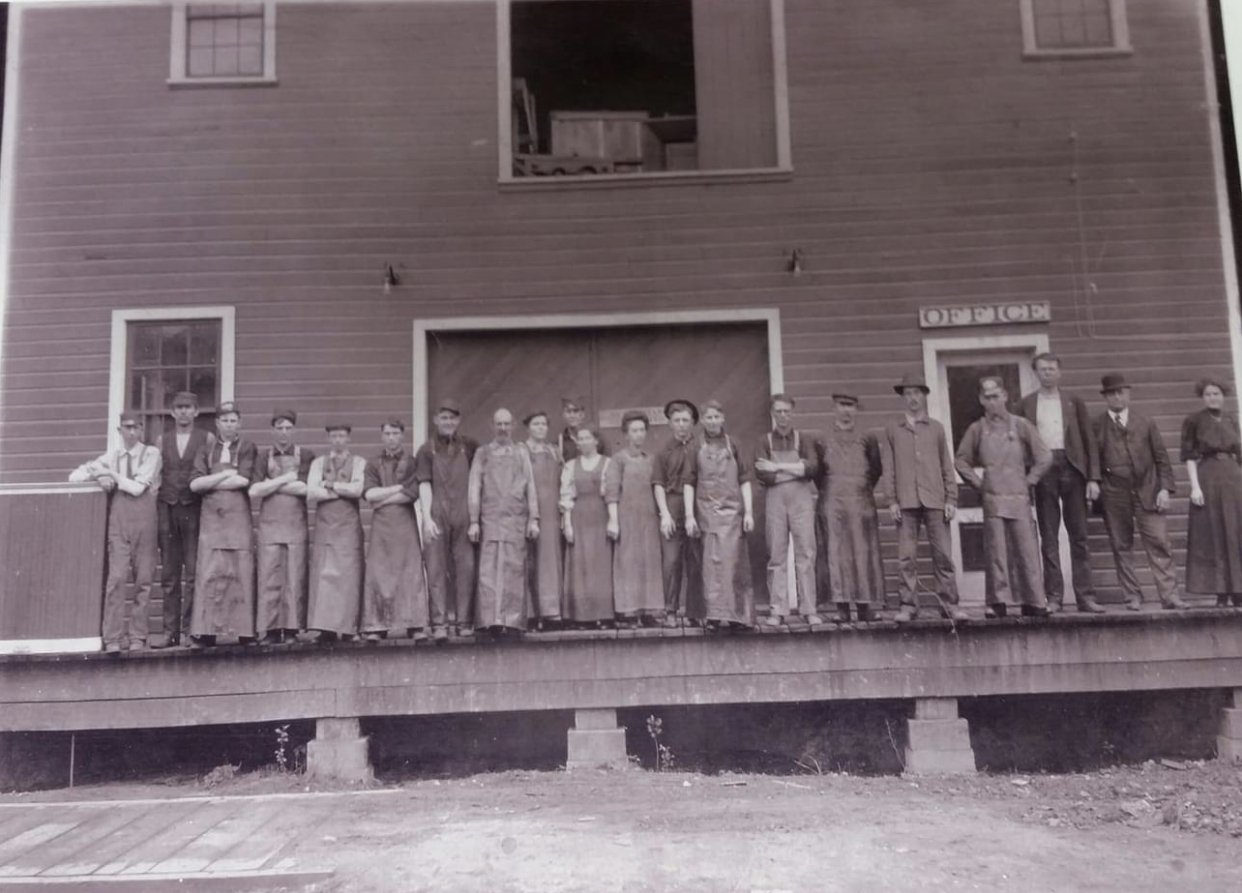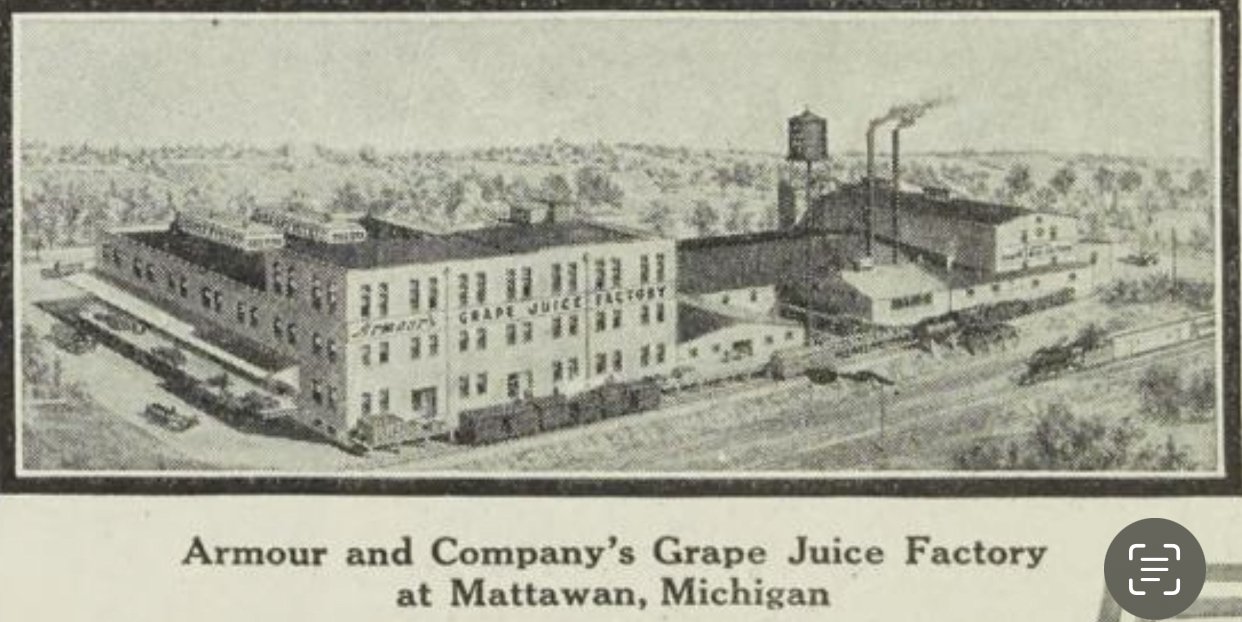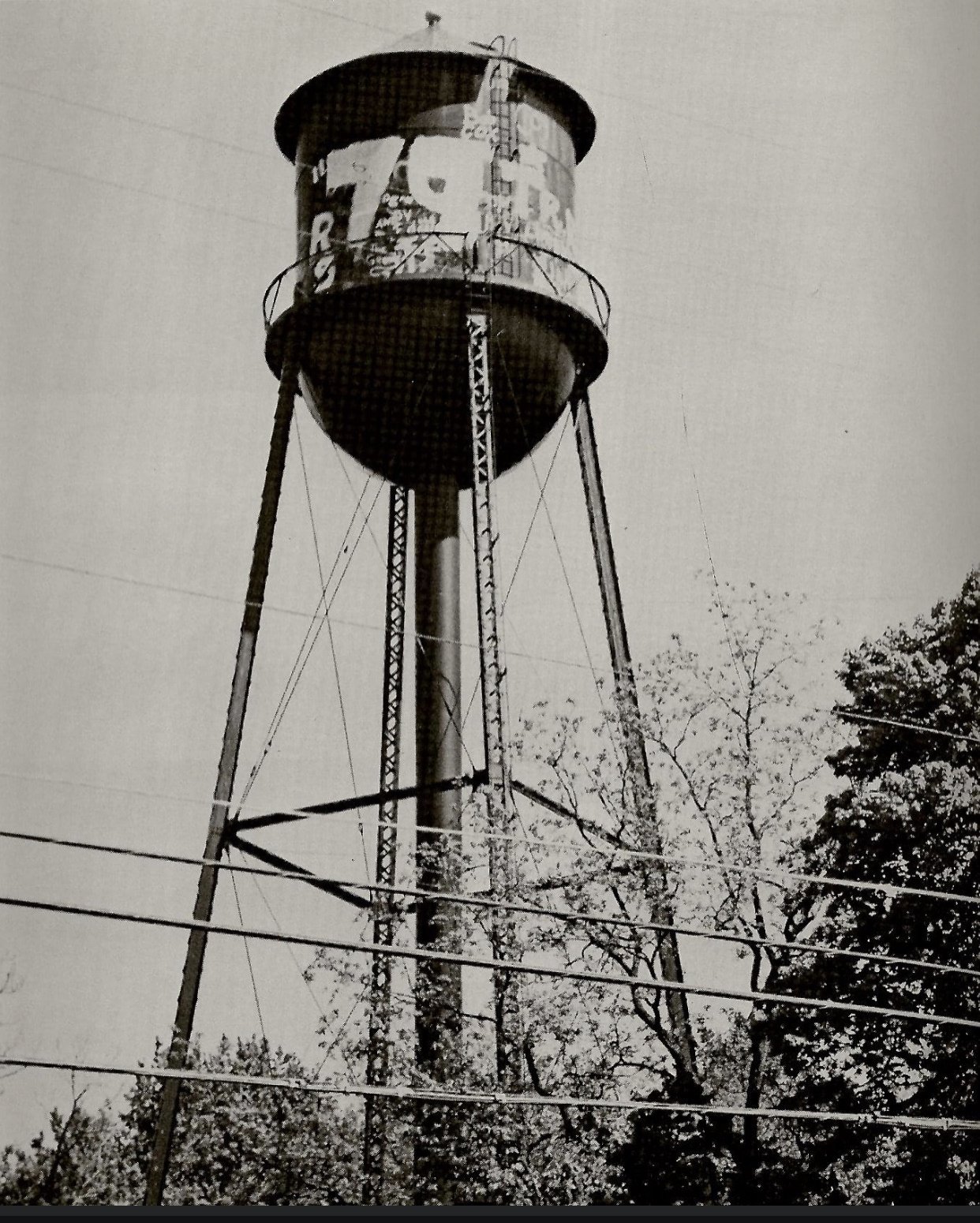ARMOUR GRAPE JUICE FACTORY
Grape grower Bert W. Payne sold Lots 1, 2, 3, and 4 of Block 6 in Kinnie’s Addition to Mattawan to the American Fruit Juice Company on April 20, 1903. However, due to a lack of funds to promote grape juice sales, he sold the business to H.S. Gray of Benton Harbor on December 12, 1905.
It is uncertain whether the Grays operated the factory. On April 8, 1908, they sold it to Henry Knapp of Battle Creek and Julius Desenberg of Lawton. Desenberg had been in the mercantile business in Lawton for many years and owned a vineyard near Pretty Lake in Kalamazoo County. He hired Philip Deats, who had some experience with the Lawton Fruit Juice Company, and the factory operated once again until Desenberg and Knapp sold it to J. Ogden Armour on May 9, 1909, for $5,000.
The building was a one-story, wood-constructed plant measuring 40 by 60 feet. In 1927, Armour and Company sold the grape juice factory—now used for storage—to United Grape Products, Inc. of Buffalo, N.Y. This conglomerate comprised several near-bankrupt New York grape juice plants, engineered by C.C. Palmer, president of the Hungerford-Smith Grape Juice Company of Lawton. The primary intention behind the purchase of Armour’s Mattawan plant was to eliminate Welch from the market and take control of it.
However, with the onset of the Depression, the plan backfired, and Welch ended up buying the entire plant. From about 1934 to 1960, Welch operated the facility before selling it to Glazer-Crandall.
United Grape Products had started producing a grape concentrate product about 30 years too early. The product was created by mixing equal parts cane sugar and pure Concord grape juice. This syrup was intended for bottlers and soda fountains to create carbonated beverages that would compete with Coca-Cola. Although it was a good product, it did not sell well. This was before the advent of modern juice concentrators that make concentrated fruit juices.
Original factory made of wood. Note the water tower.
The factory expanded and the wood building is seen to the right w/ the water tower. Picture about 1908.
Gapes coming in by horses and wagons for easy export by the railroad. Beyond this plant existed a slaughter house where pigs were loaded into the back of trains while passengers loaded the front of the trains in today’s Mattawan Park near the bridge shown in the picture.
Residents of today likely recall the factory as appears above. Note company Glaser & Crandall painted white on the bricks and ties to the historical story of ownership. The water tower still standing above the roof.
The old water tower as it stood for over 100 years, taken down late 1990s,





